Nicosia Landmarks and Monuments
(Nicosia, Cyprus)
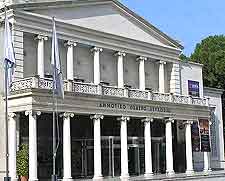
As the capital of
Cyprus, it is quite understandable that Nicosia contains some impressive landmarks and historical monuments. However, the sheer concentration of these landmarks takes many tourists holidaying in Nicosia by surprise.
The city is home to a multitude of churches, mosques, ancient ruins and striking Venetian walls. Amongst the most notable of the landmarks in South Nicosia are the Archbishop's Palace, the Famagusta Gate, the Pafos Gate, the Holy Cross Catholic Church and also the House of Hatzigeorgakis Kornesios.
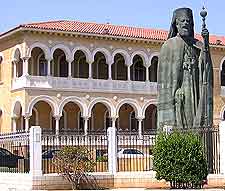
Archbishop's Palace
Address: Plateia Archiepiskopou Kyprianou, South Nicosia, Cyprus
Situated on the Plateia Archiepiskopou Kyprianou and seemingly Venetian in its appearance, the Archbishop's Palace was actually constructed as recently as the early fifties. Soon after, the Archbishop's Palace become something of a sight of conflict and much fighting took place here in 1956, and again during the military coup of 1974, when it came close to being completely destroyed. Rebuilt in the eighties, the Archbishop's Palace is once again a grand building and although only rarely open to the public, is certainly worth a look, particularly to see the bust of Archbishop Kyprianos outside, a religious leader executed by the Turks in the 1820s.
Open hours: daily
Admission: free, view from outside only
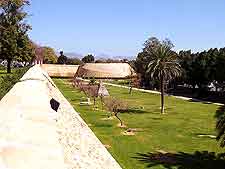
Venetian Walls
Address: South Nicosia, Cyprus
An iconic symbol of the city, the Venetian walls certainly are a sight to see. These walls surround the Old City area and create a truly memorable image. When viewed from high above, the Venetian walls seem to be shaped rather like a snowflake. Although the wall was built to encircle and protect the Old City, and at one stage even featured a moat, they sadly failed and in 1570, not long after the walls had been completed, the Ottomans arrived and successfully stormed these impressive fortifications.
Open hours: daily
Admission: free
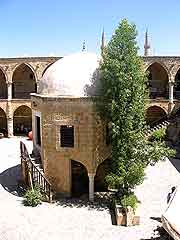
Buyuk Han (Great Inn) and Kumarcilar Han (Gambler's Inn)
Address: Arasta Sokak, North Nicosia, Cyprus
A splendid example of fine, medieval Ottoman craftsmanship and architecture at its very best, the Buyuk Han was completed in the early 1570s, being built at the request of the island's very first Ottoman governor. The Buyuk Han has recently enjoyed much renovation work and is now very much central to the shopping scene in the Old City, since it currently houses a host of traditional shops and handicraft workshops. Just a short distance to the north of the Buyuk Han, the Kumarcilar Han is another old inn of note, dating from the 17th century. Turkish inns of this style were once very much commonplace on Cyprus, although today, very few actually remain.
Open hours: daily
Admission: free
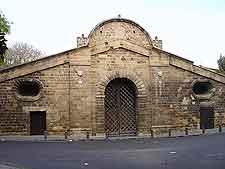
Famagusta Gate
Address: Pyli Ammohostou, South Nicosia, Cyprus
The Famagusta Gate stands on the easterly side of the city and is without question the most striking of the city's old gateway landmarks, being much photographed and admired by tourists. Standing within the Caraffa Bastion and just a stone's throw from the Leoforos Athinas, the Famagusta Gate began to fall into a state of disrepair during the 20th century, until is was beautifully restored in the early 1980s. Today, the Famagusta Gate is much more than just a gateway and this structure also functions as a venue for outdoor concerts and exhibitions, with a tunnel leading visitors through the ramparts and outside, to the arena space.
Open hours: Monday to Friday - 09:00 to 13:00, 16:00 to 19:00
Admission: free
Pafos Gate
Address: South Nicosia, Cyprus
The city's most westerly gateway, the Pafos Gate was formerly known by the Venetians as the Porta San Domenico and remains one of just three historical entrances into Old Lefkosia. There are many different flags flying at this landmark gate, with the flags of Cyprus, Greece, Turkey and also North Cyprus all seeming to compete with each other. Historically, the Pafos Gate served as an arsenal warehouse for Nicosia during the Ottoman period and later as an important headquarters for the UK police.
Open hours: daily
Admission: free
Holy Cross Catholic Church
Address: South Nicosia, Cyprus
Just a short distance to the east of the Pafos Gate, the Holy Cross Catholic Church enjoys a slightly strange setting, since it is located in the actual UN buffer zone, facing away from the Turkish sector. Despite it location, the Holy Cross Catholic Church still manages to successfully function as a church and place of worship, although a strict stipulation of this is that its backdoor facing the Turkish area remains firmly closed at all times.
Open hours: daily - mass times are displayed inside the vestibule
Admission: free
House of Hatzigeorgakis Kornesios
Address: Patriarchou Grigoriou 20, South Nicosia, Cyprus
Tel: +357 2230 5316
The House of Hatzigeorgakis Kornesios is a popular attraction in Nicosia and was once the home of Kornesios, the Great Dragoman of Cyprus, between 1779 and 1809. The title 'Dragoman' simply means an interpreter of the Ottomans and Orthodox cultures and after gaining much power and respect locally, Kornesios became a man of extreme wealth, and incredibly rose to be considered the island's most powerful and influential man. Sadly, his life took a turn for the worse, when peasants revolted against his greed and Kornesios fled to Istanbul. Today, his mansion is something of a museum and shows only glimpses of his former extravagance and standing, although the architecture itself is a wonderment.
Open hours: Monday to Friday - 08:00 to 14:00, Saturday - 09:00 to 13:00
Admission: charge
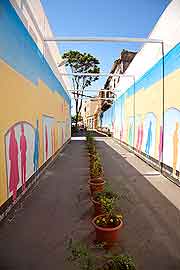
Ledra Palace Hotel Crossing
Address: Nicosia, Cyprus
An unusual part of Cyprus, the Ledra Palace Hotel Crossing is reserved for both bicycle and pedestrians crossing between the island's North and South regions. This is the only place of its kind on Cyprus and is often a busy location, being used by large numbers of local Cypriots and holiday makers on a daily basis. The Ledra Palace Hotel Crossing is approximately 300 metres / 984 feet in length and the hotel no longer offers accommodation, as it is now used solely by the United Nations (UN). A handful of abandoned buildings and shops are close by.
Open hours: daily
Admission: free
Roccas (Kaytazaga) Bastion
Address: South Nicosia, Cyprus
The Roccas Bastion has earned itself a unique place in Cypriot history, since this was actually the only spot on the island where both the Greek and Turkish Cypriots were able to watch each other at very close quarters, prior to 2003. Although the Roccas Bastion is certainly not what you could ever seriously call a tourist attraction, it has been an important landmark on Cyprus since the 1974 Turkish invasion. This border lacks the usual deep UN buffer zone and can be found just a short distance to the south of the Ledra Palace Hotel.
Open hours: daily
Admission: free
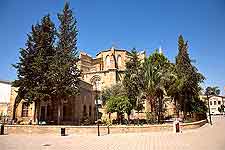
Selimiye Mosque (Selimiye Camii)
Address: Selimiye Meydani, North Nicosia, Cyprus
Easy to spot on the skyline of North Nicosia, the Selimeye Mosque is a rather unusual-looking landmark, with distinctive French and Gothic elements to its architecture. The history of the church is long and interesting, with the first stone being laid as long ago as 1209. However, building delays and problems continued for many years, and the church was not actually completed for almost 120 years, finally opening its doors to worshippers in the early part of the 14th century, when it was known as the Church of Agia Sofia. The arrival of the Ottomans in 1570 saw the church denuded of all its Christian elements, and the arrival of the present-day twin minarets, which are now joined by Turkish flags.
Open hours: daily
Admission: free
 As the capital of Cyprus, it is quite understandable that Nicosia contains some impressive landmarks and historical monuments. However, the sheer concentration of these landmarks takes many tourists holidaying in Nicosia by surprise.
As the capital of Cyprus, it is quite understandable that Nicosia contains some impressive landmarks and historical monuments. However, the sheer concentration of these landmarks takes many tourists holidaying in Nicosia by surprise.




